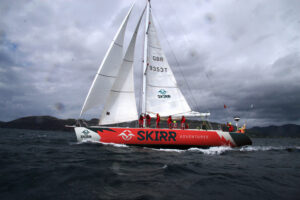Among Ice Giants
‘Nothing really prepares one for the reality of a huge iceberg which is larger than some islands I have visited’ – Rich, crew member on this year’s SKIRR Adventures expedition.
Two ocean-racing yachts, primed in some of the planet’s toughest conditions, spent this summer on a 4,820 nautical mile expedition to some of the most remote places on Earth. For eight weeks, the adapted Clipper 68 yachts voyaged to the high latitudes, from the Scottish Isles, to the Faroe Islands, Iceland and across the Arctic Circle into the infamous Scoresby Sund of Greenland.
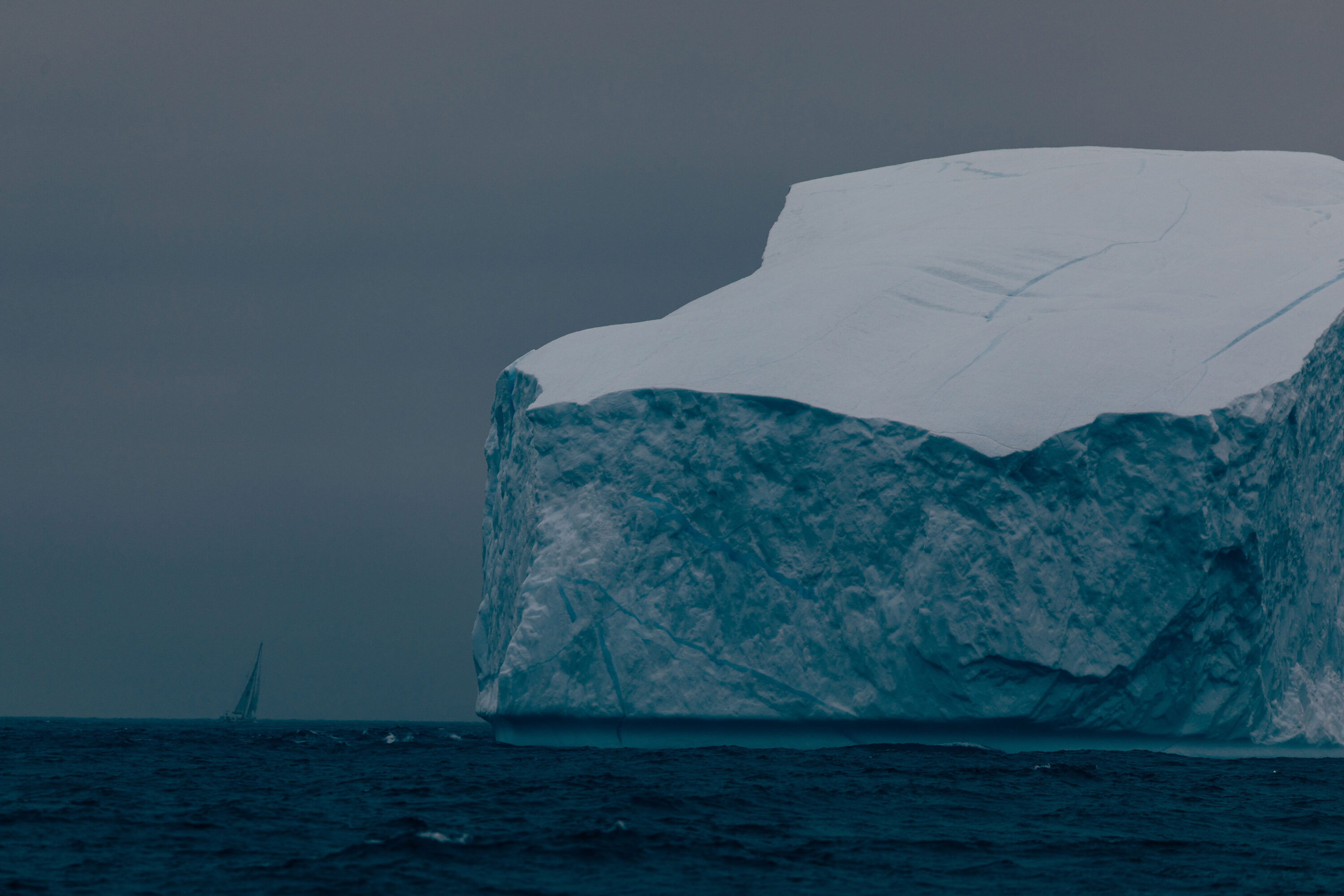
“The icebergs have a scale to them that is really unimaginable until you see them.” A SKIRR expedition yacht dwarfed by one of the huge icebergs between Reyjavik and Tasiilaq
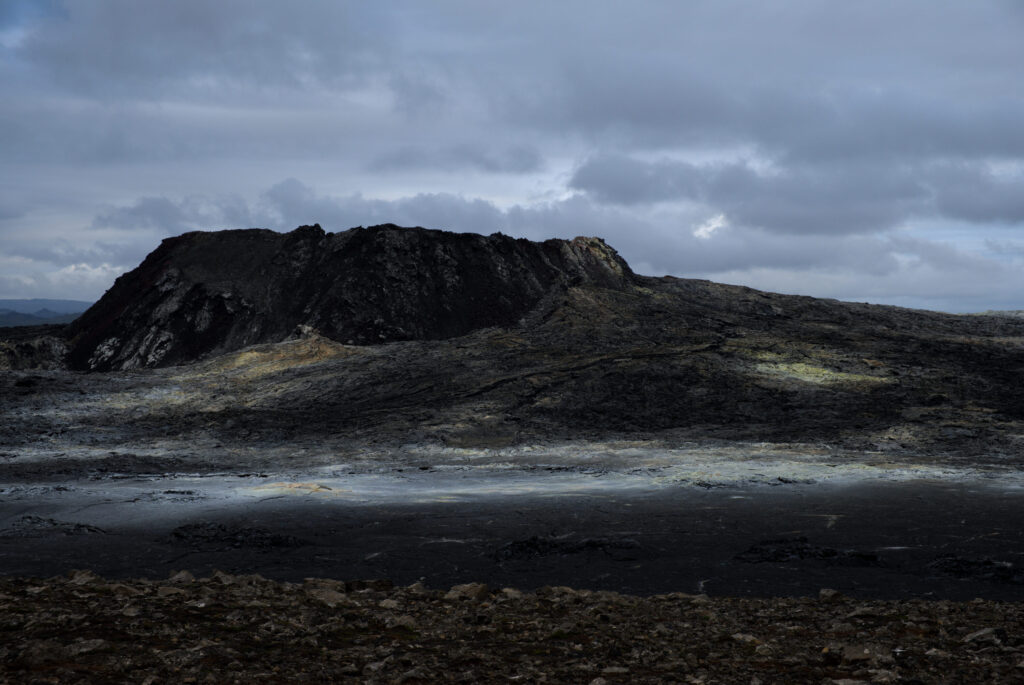
The moody volcanic landscapes of Iceland at the end of Leg 5 © Manot Berger
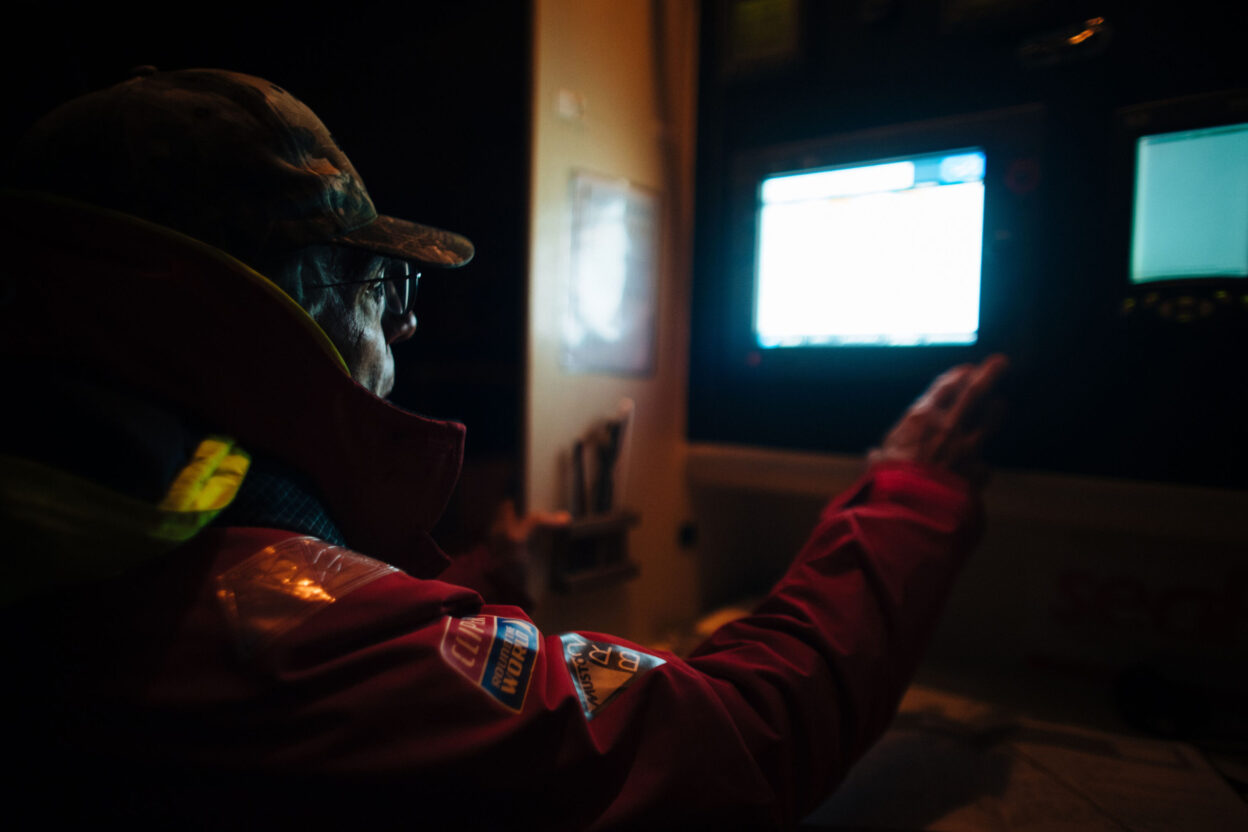
The crew sail in watch systems day and night, and good navigation 24/7 is critical in passing through the tricky arctic waters
The SKIRR Adventures expedition brings together adventurers from around the world to explore the planet’s hidden corners under sail. On the inaugural voyage, 49 sailors took part across the five legs, witnessing the raw beauty, exhilarating sailing and untouched wildlife of one of the most remote areas in the world.
The third leg took the expedition crew to Tasiilaq, the largest town on the East Coast of Greenland, set inside a fjord that is often full of ice. On this occasion, there was so much ice that it denied the yachts access to land, but offered some of the most incredible seascapes with huge majestic icebergs and impressive ice packs.
‘The conditions were harsh,’ recalls Skipper Bob Beggs. ‘We did get close to the coast of Greenland, where we could see mountains and glaciers but the ice proved to be too thick. It would be another week before the ice dispersed.’
We did get close to the coast of Greenland, where we could see mountains and glaciers but the ice proved to be too thick
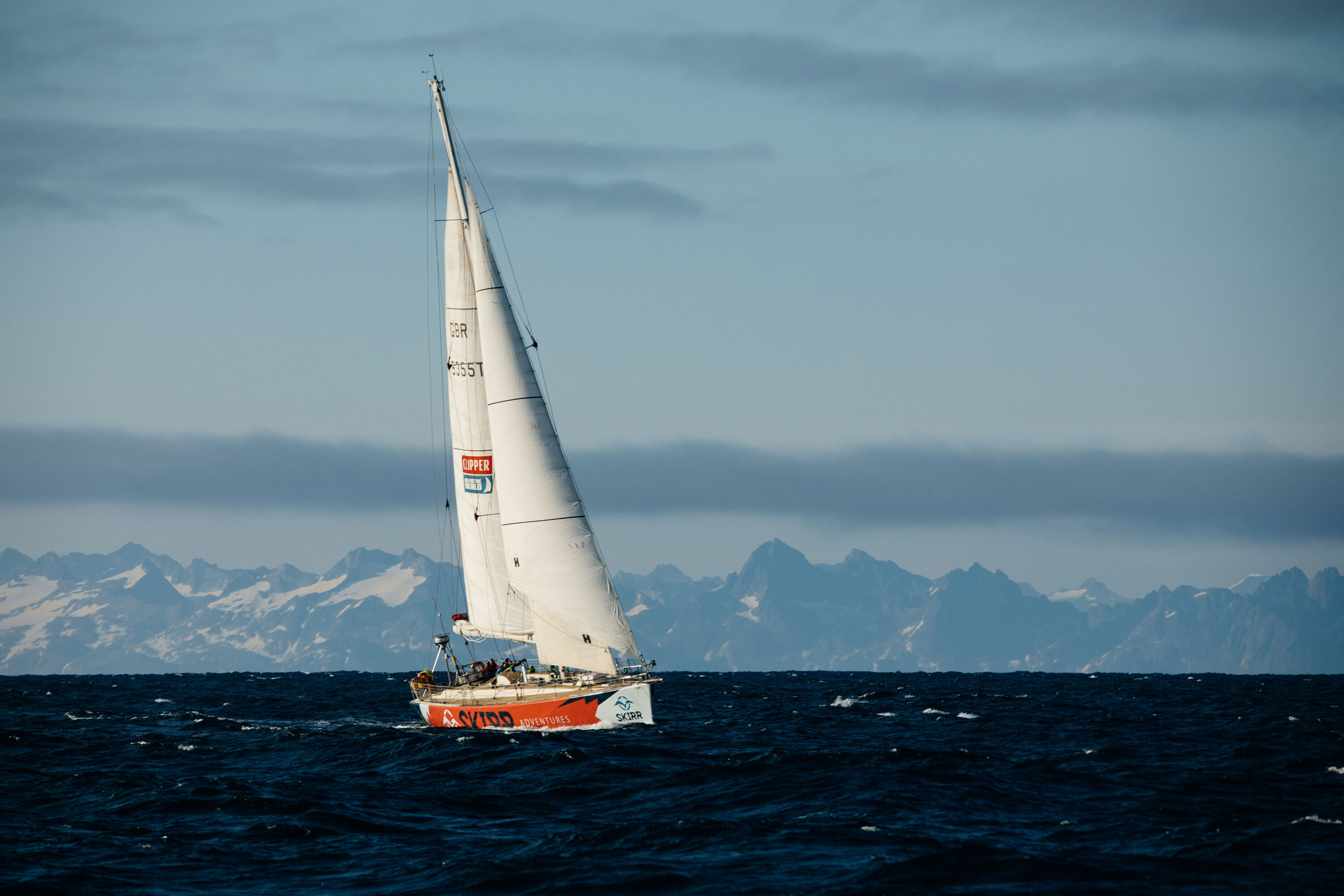
One of the adapted Clipper 68 yachts on SKIRR’s inaugural expedition to the Arctic
‘I can never get enough of seeing sea ice,’ says Toni Wilson, from London, who completed all five legs of the SKIRR expedition this year. ‘There is so much beauty in the colours and shapes that the wind and sea makes it into – it’s really sculptural. The icebergs have a scale to them that is really unimaginable until you see them.’
Back in Reykjavik for crew changeover, the fourth leg of the adventure commenced. Having waited out several heavy weather systems, a fortunate window of opportunity emerged for the boats to get clearance to head to Scoresby Sund – a 1,005 nautical mile route crossing the Arctic Circle.
‘The reports were that the ice was going to be scarce so we were able to push through and get to Scorseby Sund which was relatively ice free,’ explains Beggs. During the very early hours of August 4th, the two SKIRR Adventures yachts crossed into the Arctic Circle, a line of latitude around the Earth, at approximately 66°30′ N.
The land was completely barren, there is nothing green about Greenland at all
‘As we got to the entrance of the sound, the fog cleared and there was blue sky all around us. We could see the whole of Scoresby Sund and the villages around its perimeter,’ recalls Greg Glover, a farmer in his day job who also joined for the entire expedition. ‘The land was completely barren, there is nothing green about Greenland at all. We could see up to the mountains where there were glaciers and there were icebergs floating just off the shore of these little villages.’
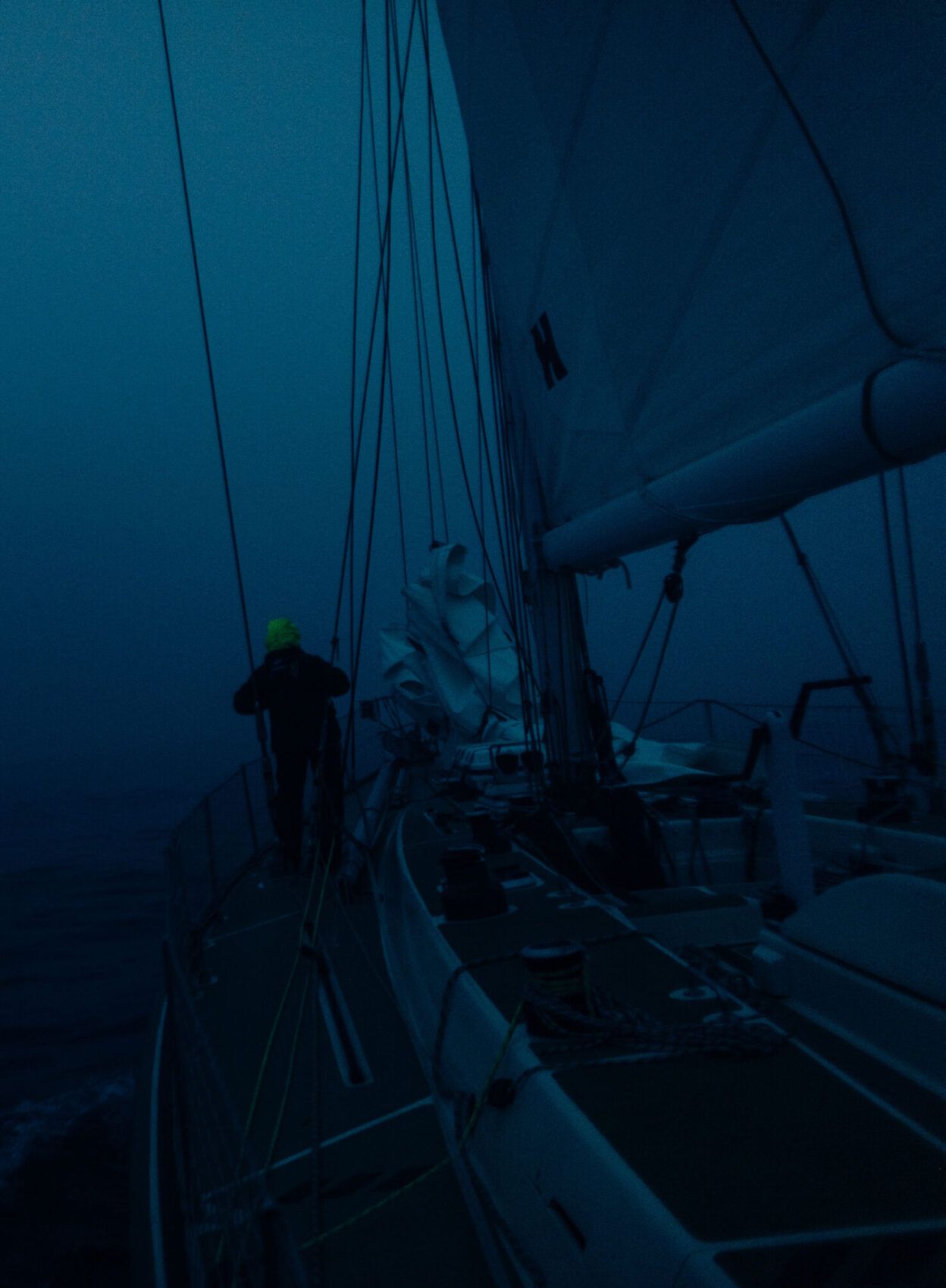
Darkness never quite falls this close to the arctic circle – approaching Tasiilaq, Greenland
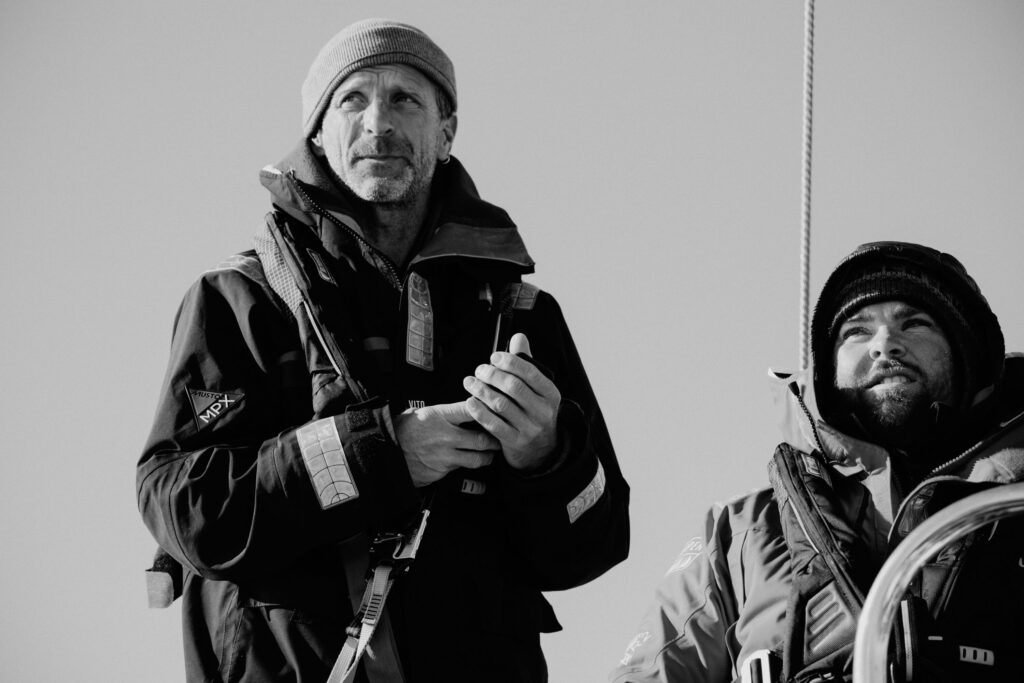
One of the twelve crew on board, and Skipper Jake Carter
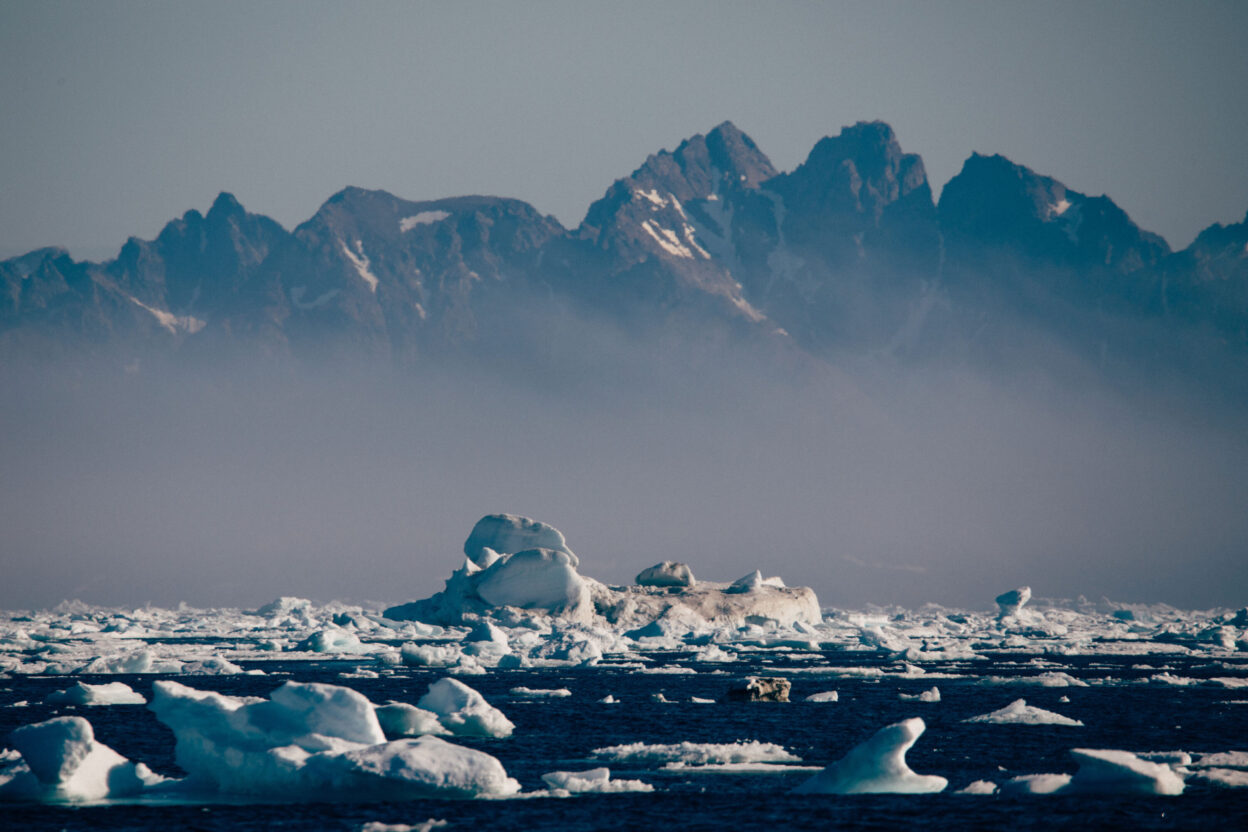
Scoresby Sund is a large fjord system with a tree-like structure. The Arctic climate means long, cold winters and severe storms
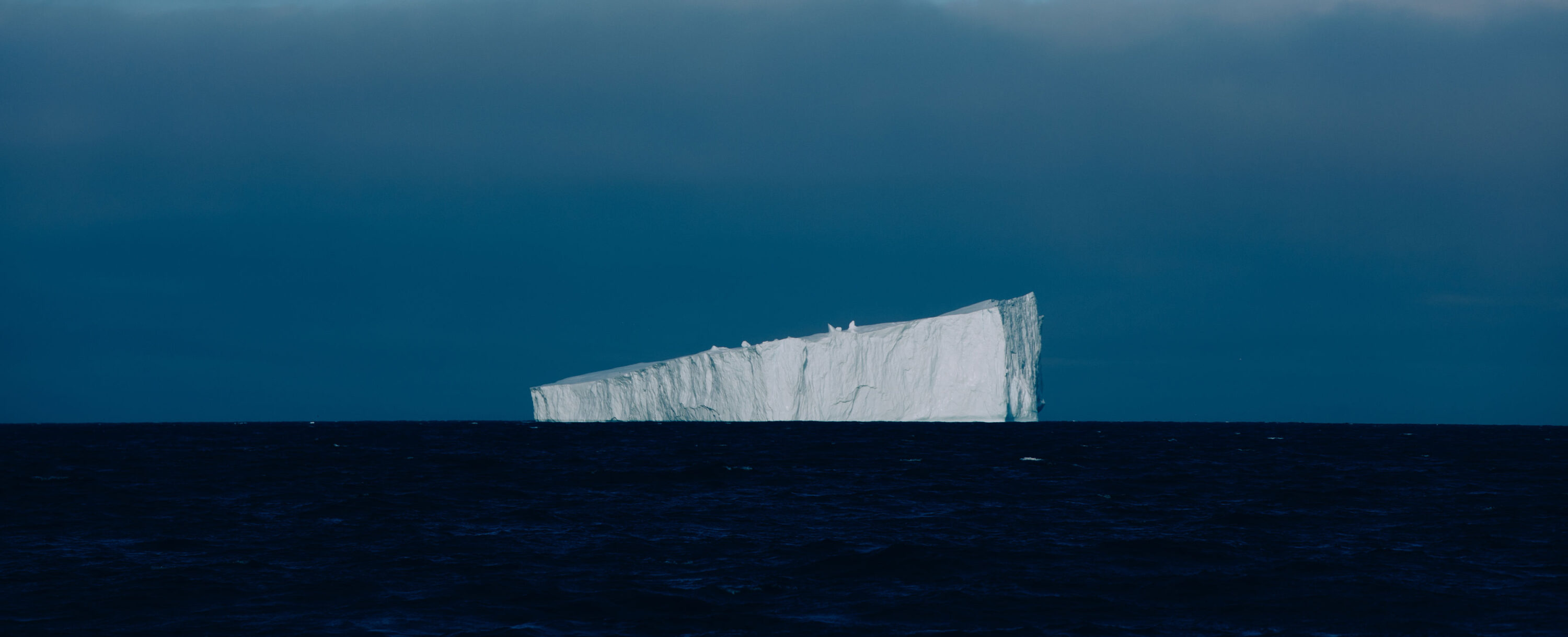
‘The icebergs have a scale to them that is really unimaginable until you see them.’ These colossal ice giants are facing the rapidly increasing impact of climate change
Whilst the beauty of venturing to the most untouched corners of the globe is something extremely special, the reality is that these places are facing the rapidly increasing impact of climate change.
On the expedition, the crew marvelled at the pristine waters, stunning wildlife and of course, the enormous icebergs that dominated the landscape. Their decline however, was also a reality, and the crew witnessed ice melting in front of their eyes.
‘This expedition showed me how wonderful our planet is and also how vulnerable she is too,’ says Tom, a French crew member sailing on board. ‘These massive giants that are left alone to drift on the sea will eventually melt and return to the ocean without leaving a trace behind as they continue to perpetuate an infinite cycle of life.’
This story first appeared in issue 09 of BASE magazine, subscribe for FREE to get your copy.
Interested in becoming an Arctic Circle explorer? Find out more on the SKIRR Adventures website.
Don’t miss a single adventure
Sign up to our free newsletter and get a weekly BASE hit to your inbox
You might also like
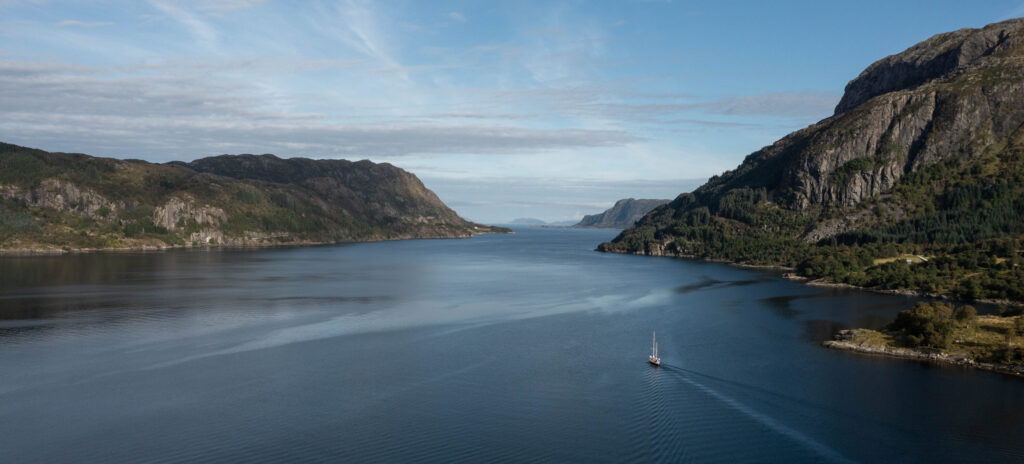
Story • Nino Mazzone • Dec 08, 2022
North on The Wind
A sailing expedition to discover the coastal mountains of Arctic Norway
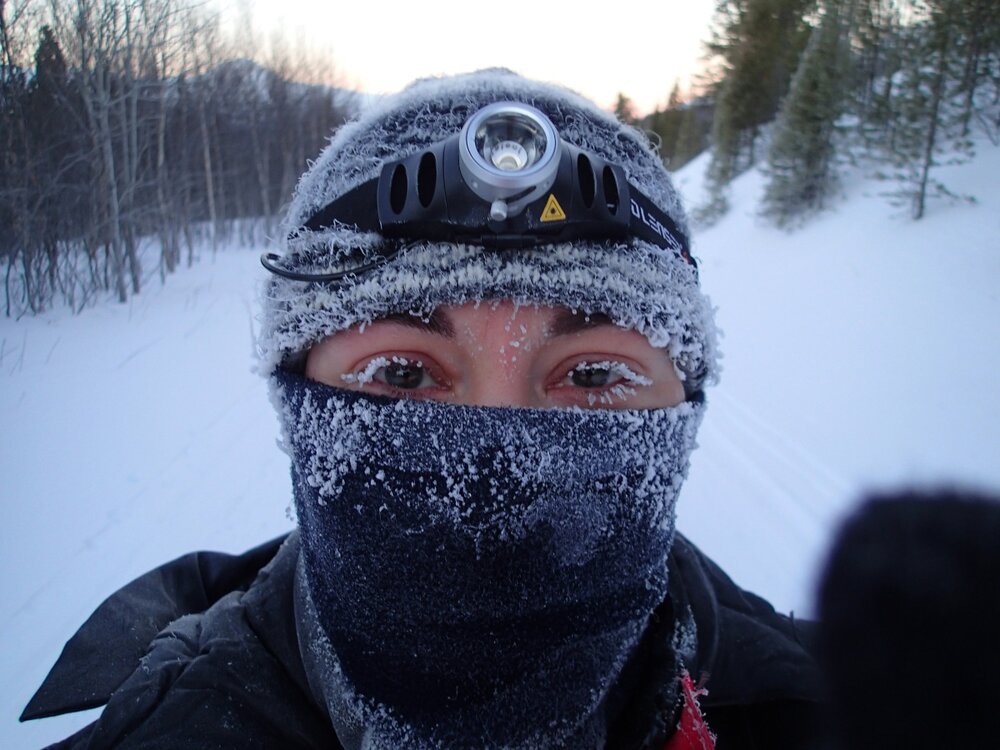
Story • Belinda Kirk • Aug 31, 2021
How Adventure Changes Lives
The case for ditching the living room in favour of a longer, happier, and more adventurous life.
![The wild tide race off Morte Point at the western extremity of North Devon’s Exmoor Coast in a Force 8 easterly gale, with the 4 knot ebb current running at full tilt. In local Devonian lore, Morte Point is ‘the place that God made last and the Devil will take first’, due to the numerous shipwrecks and fishing boat accidents that have occurred on the point. Unusually, there in no ‘inshore passage’ [an area of calmer water immediately offshore] off Morte Point, and the tide race breaks directly on the rocks. Not a place to be in wrong conditions, or without knowing which way the tide is flowing. © David Pickford](https://www.base-mag.com/wp-content/uploads/2021/12/MG_9049-1024x504.jpg)
Story • William Thomson • Aug 27, 2020
An Adventurer’s Guide to Tides and Currents
William Thompson provides a practical guide to understanding the basics of ocean movement
